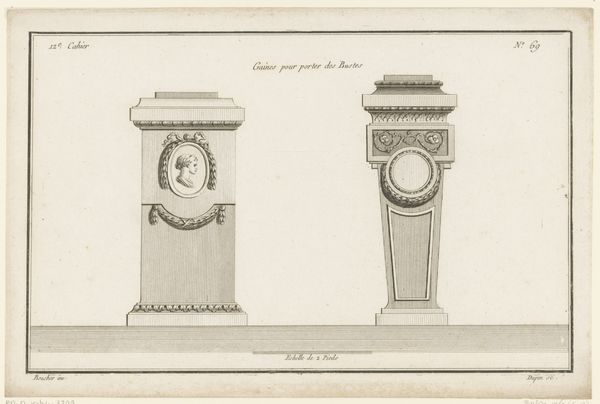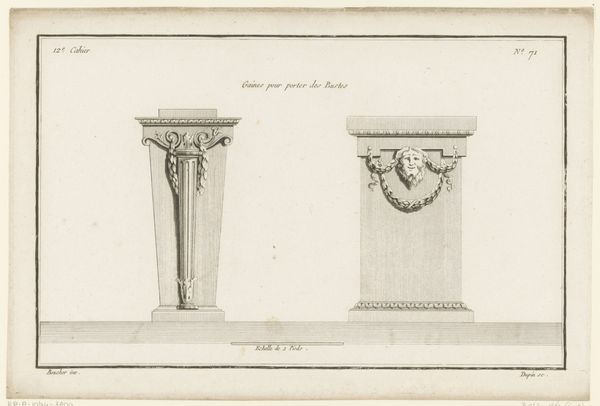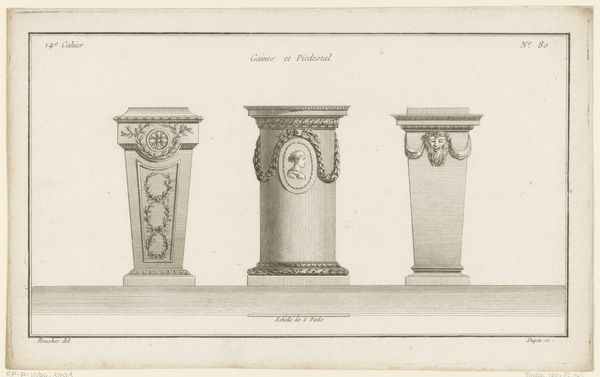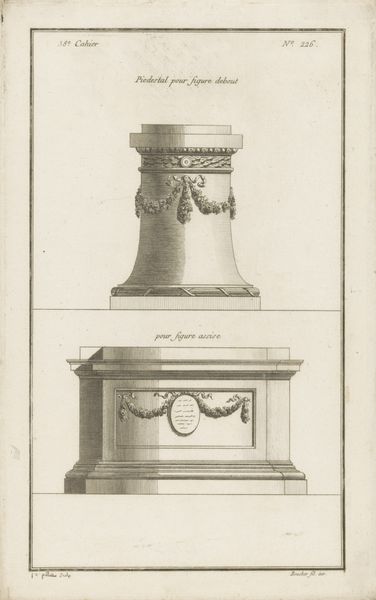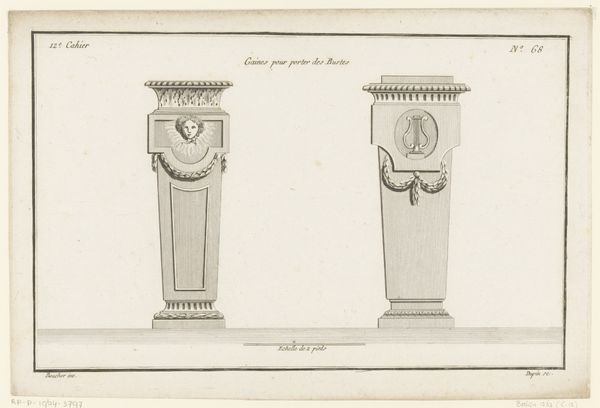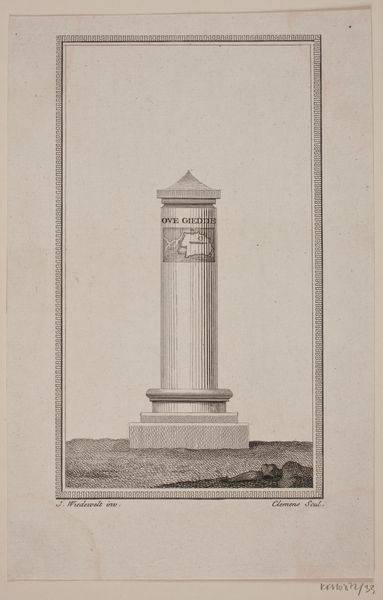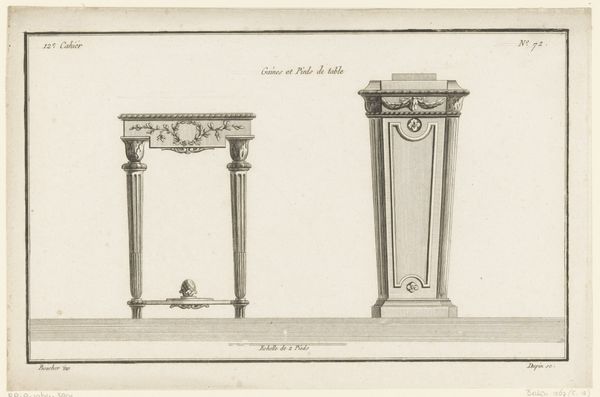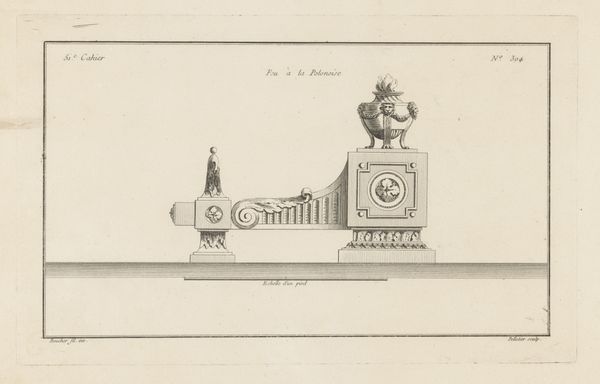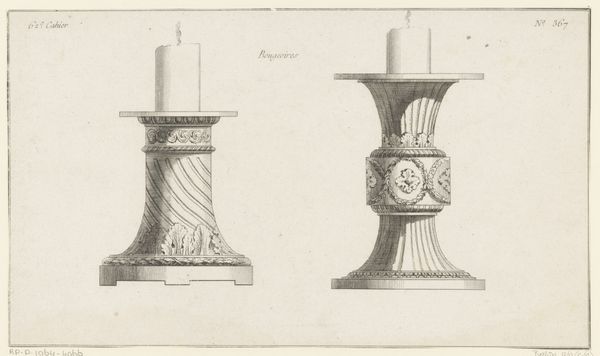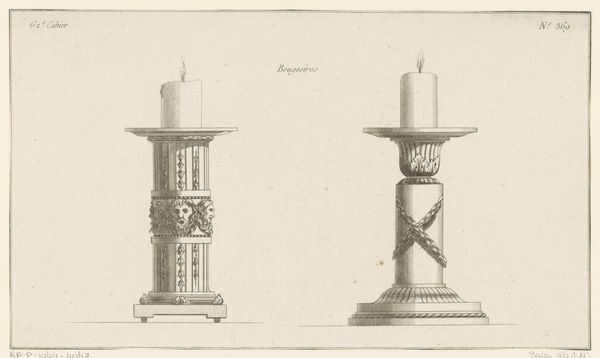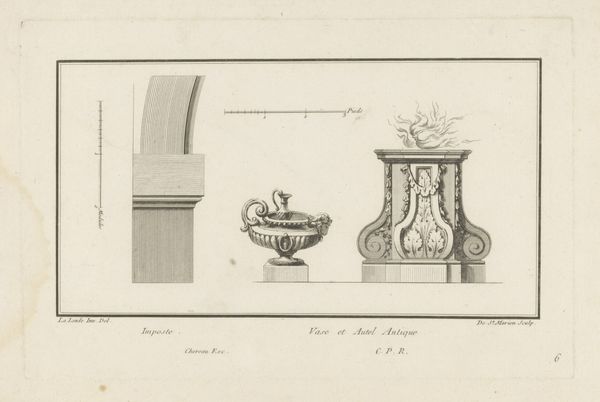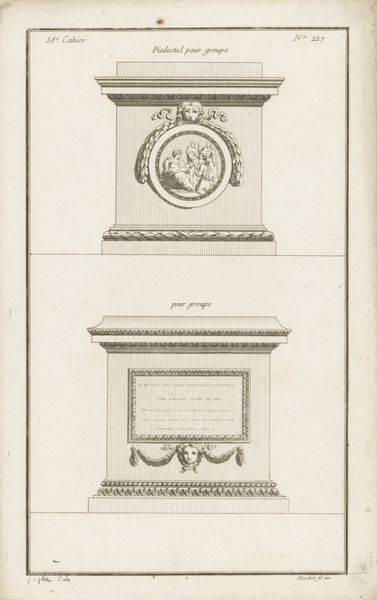
drawing, paper, engraving
#
drawing
#
neoclacissism
#
paper
#
geometric
#
column
#
engraving
Dimensions: height 212 mm, width 321 mm
Copyright: Rijks Museum: Open Domain
Here, we have Nicolas Dupin's design for pedestals and columns to hold busts, rendered with ink in the late 18th century. The wreath is the dominant motif. Observe how this symbol, derived from ancient Greek and Roman traditions, has evolved. In antiquity, wreaths of laurel or olive signified victory, honor, and civic virtue. We see it here, adorning these neo-classical structures, stripped of its overt political associations. Instead, it represents a more generalized form of respect and commemoration. Like the eternal return in Nietzsche, the wreath motif reappears throughout history. Consider its presence in Renaissance paintings, adorning the heads of triumphant figures, or even in modern-day memorials. This circular form is potent. It reflects a cyclical view of time, evoking feelings of continuity and remembrance. The wreath acts as a cultural signifier, a visual echo, resonating through the ages, connecting us to the emotional and psychological weight of history.
Comments
No comments
Be the first to comment and join the conversation on the ultimate creative platform.
